SURVIVAL MODE
Complete power grid failure – this is what it looks like — Ladismith case study
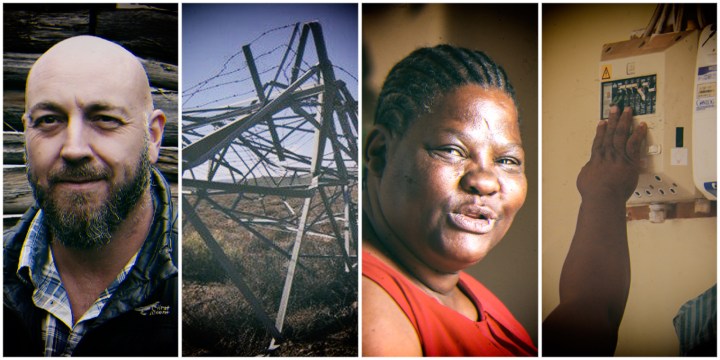
Scheduled power outages ( ie Load shedding) have become part of regular life in South Africa. But how does a community survive almost two weeks without electricity in the midst of summer? Well, it takes government-supplied generators (lots of them), 5,000 food parcels and lots of patience for those who have not had their early-morning coffee. For 'stellar' residents of Ladismith in the Western Cape, grid failure became a reality due to a vicious storm that left the town – and many in the Karoo – without electricity for almost two weeks.
Residents in the Central Karoo – in both the Western and Northern Cape – have had their electricity restored after almost two weeks without power, after gale-force winds and heavy rain damaged key power lines.
Now, residents and business owners are trying to recover.
The power had been out since the evening of Saturday, 3 February and was switched on at about 8am on Thursday, 15 February in every affected Karoo town – from Sutherland in the Northern Cape down to Ladismith in the Western Cape. Eskom apologised several times for the outage, which was caused when the wind and rain damaged the Laingsburg/Touwsrivier 132kV power lines.
This led to power outages in Sutherland, Roggeveld, Laingsburg, Ladismith, Leeu Gamka, Swartberg, Merville, Matjiesfontein, Prince Albert and Fraserburg.
Soon, relief efforts swooped into the affected towns, with Gift of the Givers providing water and food to affected families and hospitals. The provincial government also provided generators and set up power stations where residents could charge devices such as cellphones and laptops.
Read more in Daily Maverick: Central Karoo towns in critical scramble for water, generators after storms kill power supply
Although there was no confirmed number of people affected by the outage, the provincial social development department said its food relief programme would benefit an estimated 20,000.
Daily Maverick visited Ladismith to speak to residents about the outage and what it is like to live under grid failure.
Many told a similar tale: they assumed it was load shedding on Saturday evening, then thought there was a substation problem on Sunday. Then on Monday, 5 February, they found out about the damaged infrastructure.
Sitting outside his house in Nissenville, Johnie Frieslaar (66) said: “There goes the budget for food.” The pensioner added: “Our food went bad, especially our meat…” He had to sell his bakkie to pay the bills.
Read more in Daily Maverick: Eskom apologises to Karoo residents as power restored after two weeks of grid failure
As power returned on Thursday morning, his deep freezer also packed up. Frieslaar said that when he took it to a local repairman, the man offered to fix it for free, asking only that Frieslaar spread the word.
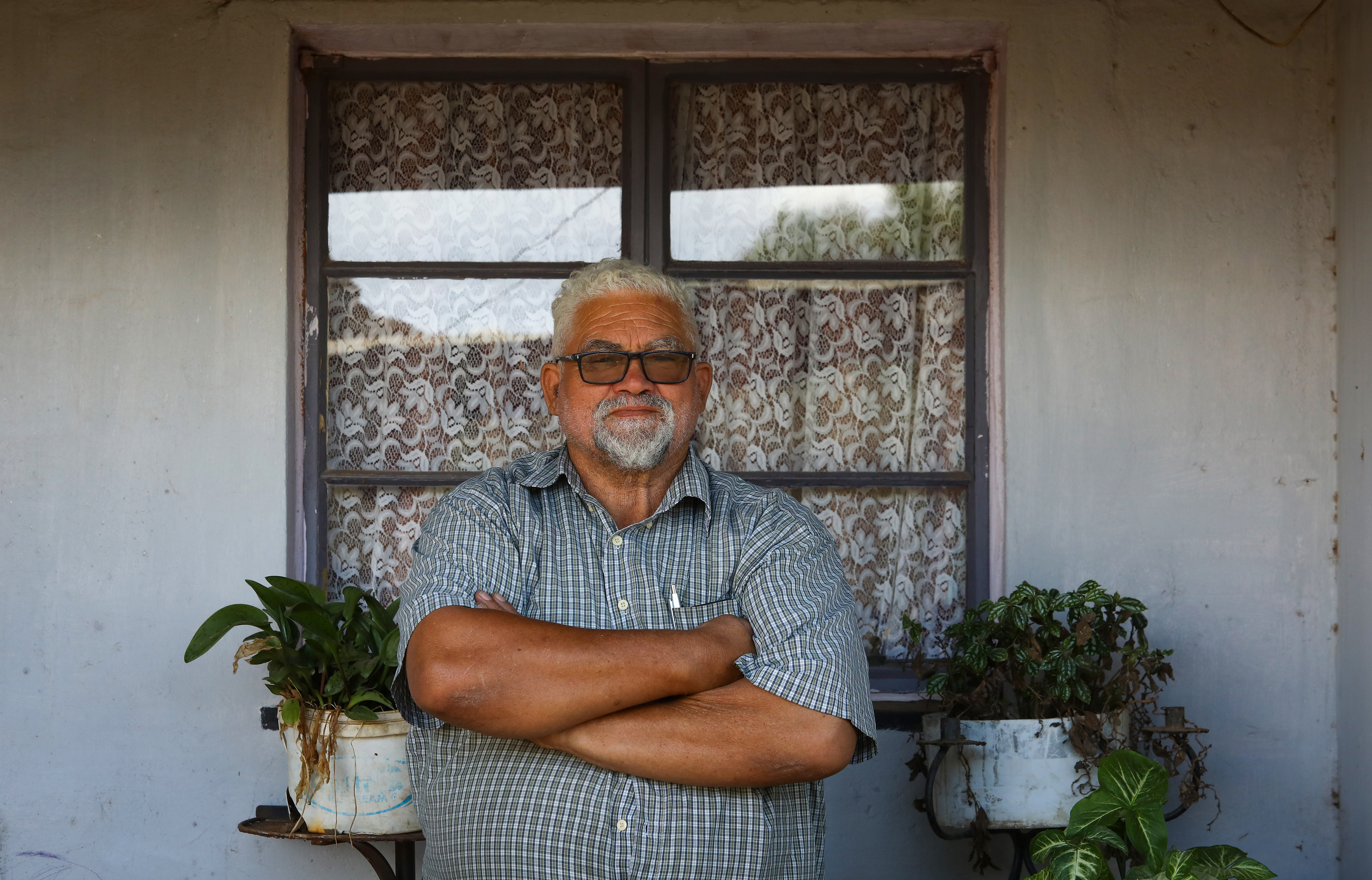
Johnie Frieslaar from Nissenville sold one of his vehicles to survive the power outage in Ladismith. (Photo: Shelley Christians)
Asked how he and his family, including his wife and grandchildren, coped with the prolonged power outage, Frieslaar said: “We needed to go back to our roots.” This included cooking food in three-legged pots over fires.
Doreen Freeman (56) lives opposite Frieslaar’s house and when Daily Maverick spoke to her, she had not realised the power was back on. She flicked the switch at the mains and promptly went to check on her fridge. She inspected a bottle containing a lemon and ginger health drink, then threw it out. Asked how it was to live without power, Freeman said she grew up without electricity, on a farm. However, “it was uncomfortable” because she had a son who worked and needed his uniform ironed.
A day before the power went out, Freeman and her family slaughtered a pig, but had to throw out the meat when it started to rot in the absence of a fridge.
Freeman sells ice lollies to children to earn extra money for essentials such as electricity. But with the outage, “the children could not eat it”.
From the fridge Freeman pulled out a bag containing insulin. She told Daily Maverick that her sister’s child, a diabetic, needed to be rushed to George Hospital, about 150km away. The child stuck to a healthy diet so the family couldn’t figure out why she landed up in hospital.
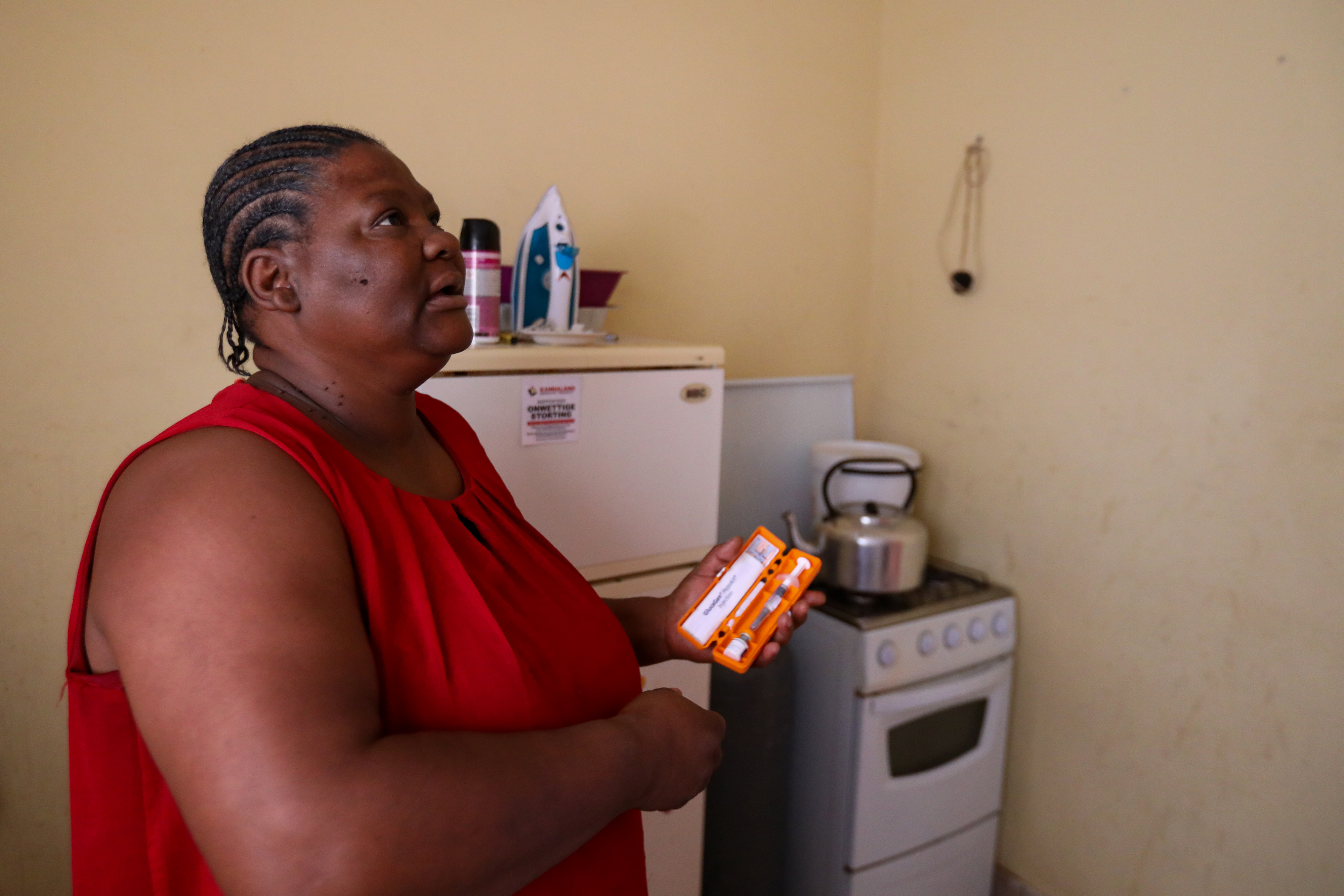
Doreen Freeman finds her niece’s insulin in the fridge that had been switched off for 12 days. (Photo: Shelley Christians)
Checking the bag, Freeman wondered whether the reason was that the insulin hadn’t been kept at the right temperature. “It could be.”
Business steps up with dry ice and generators
Local pharmacy owner Jan-Dirk Brak, whose husband is a pharmacist, told Daily Maverick it was likely that the insulin was to blame, but he could not confirm it. It had to be kept at a specific temperature to work effectively, he added.
As for the impact of the outage on his business, Brak said that while they were lucky to have solar panels, they knew they needed to keep level heads and follow the Eskom updates.
They immediately found a company that could supply dry ice to keep medication such as insulin and vaccines at their correct temperatures. Brak said plans were also put in place to help patients who had to take temperature-regulated medication – for example, medicine would be provided at different intervals. The pharmacy also had a generator so staff and customers could charge their phones.
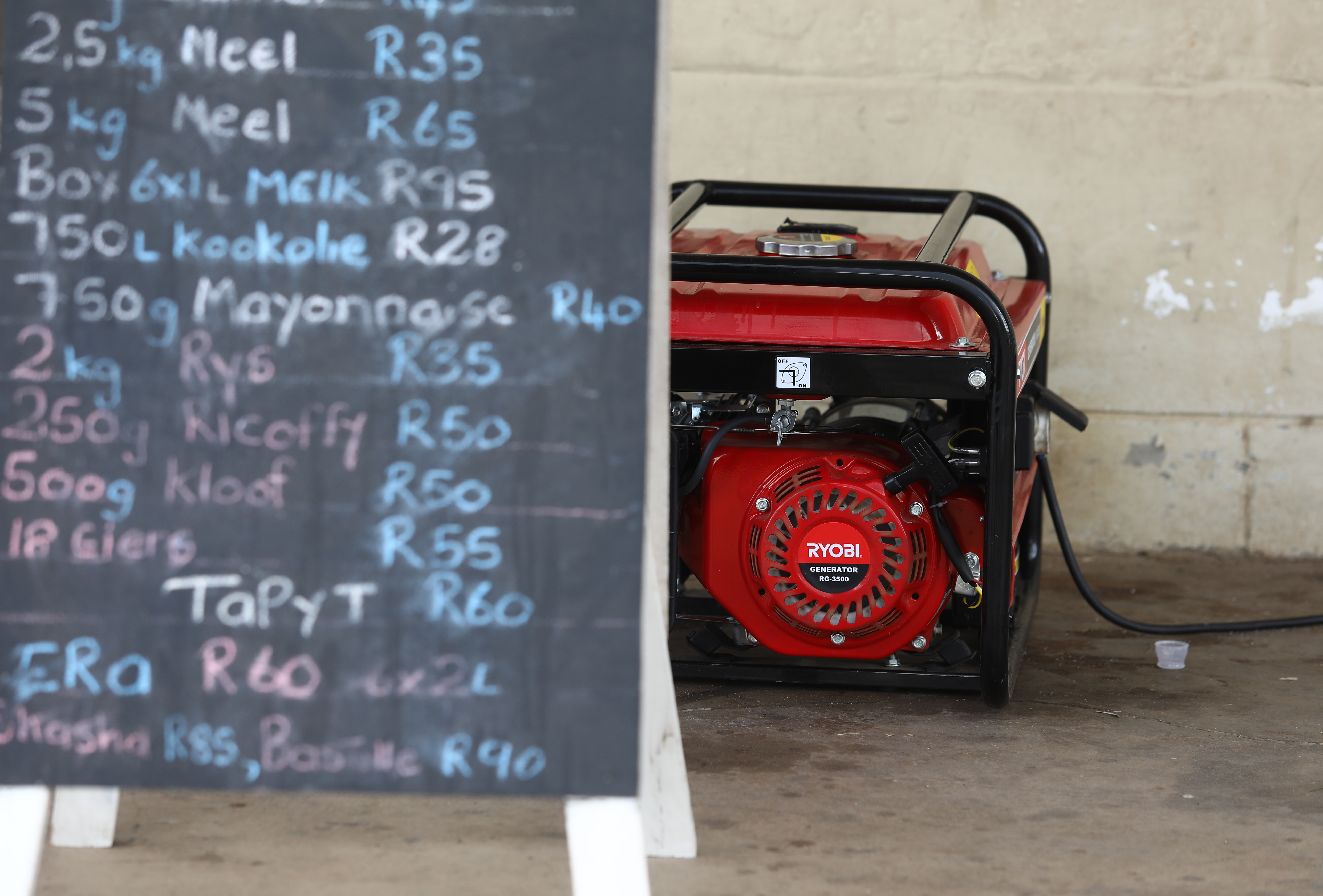
Businesses relied on generators to keep operating. (Photo: Shelley Christians)
While the pharmacy did not have many temperature-regulated products like a butchery, Brak said his customers included farmworkers and Sassa recipients who did not have cash for medications because they could not withdraw money from the local banks. “That had an impact on sales.”
When the power returned, Brak said, it was “surreal”.
And there were lessons learnt during the almost two-week outage, including compassion, he said. His staff had to be a bit more patient and compassionate with customers, some of whom were not quite themselves after “not being able to have coffee in the morning”.
Another business owner, Feroj Hossain, told Daily Maverick he used R350 worth of petrol daily to keep his generator going. He lost about R2,000 in frozen food during the outage since he could only keep one freezer and a cooldrink fridge going. The generator had kept his products cool, not cold.
Hossain had taken ownership of the shop on 1 January, and business was slow throughout the month. “But then this happened.” He had also allowed workers and customers to charge their phones throughout the outage.
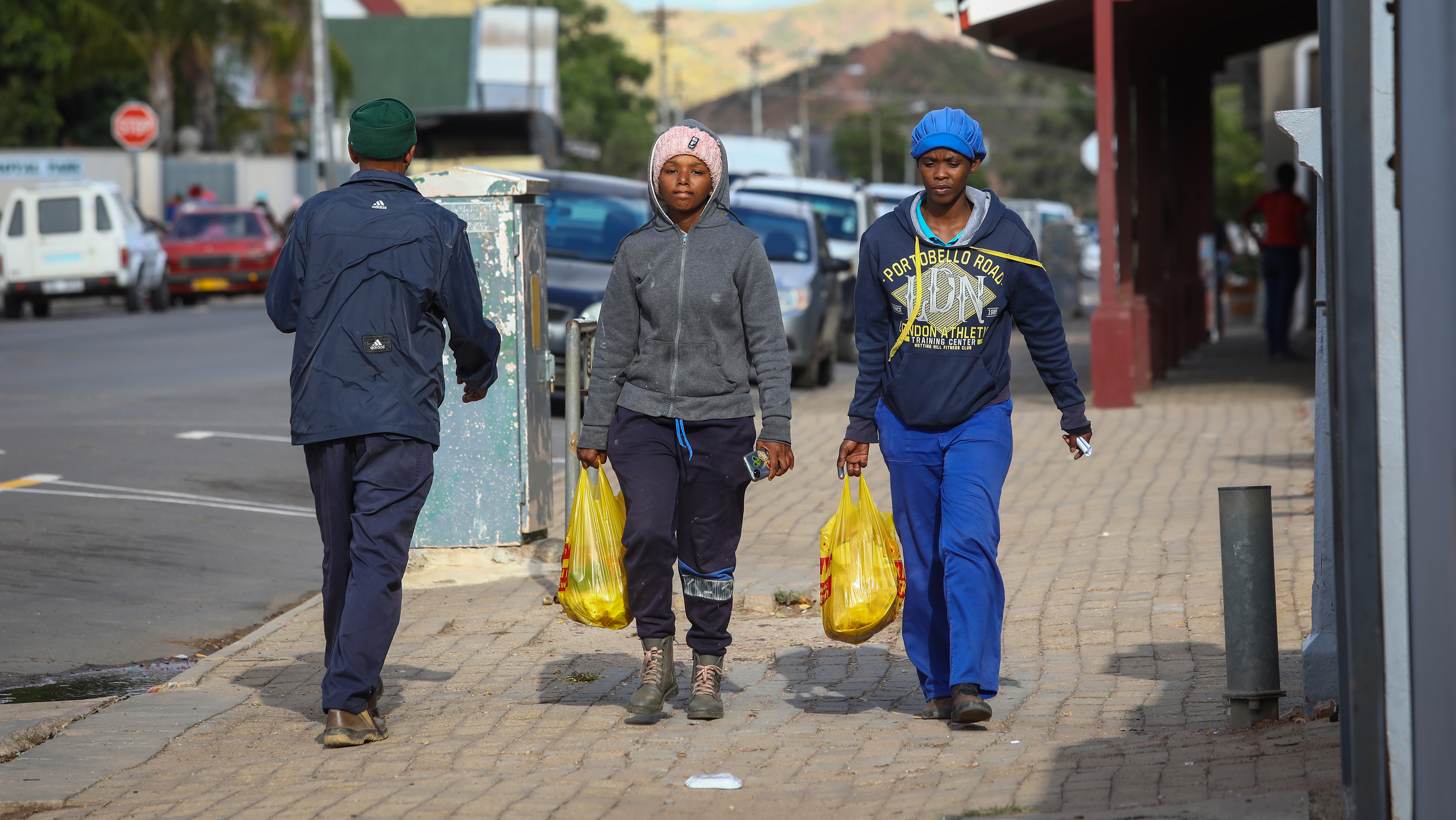
People shop in Ladismith after power was restored. It had been off for more than 12 days. (Photo: Shelley Christians)
‘The people of Ladismith were stellar’
During Daily Maverick’s visit, a common theme emerged: residents and business owners were proud of the way locals handled themselves during the outage.
“The people of Ladismith were stellar,” said George Laubscher, the Ladismith representative at the Kannaland Residents and Ratepayers Association. Sitting in a local coffee shop, Laubscher said that, had this been another town, people would have protested in frustration.
While residents banded together, with some businesses even sending food to vulnerable and elderly people, Laubscher said the Kannaland municipality did not communicate effectively with residents. “They never gave any feedback. That’s the main thing.” Only on 14 February was information on the crisis provided, he added.
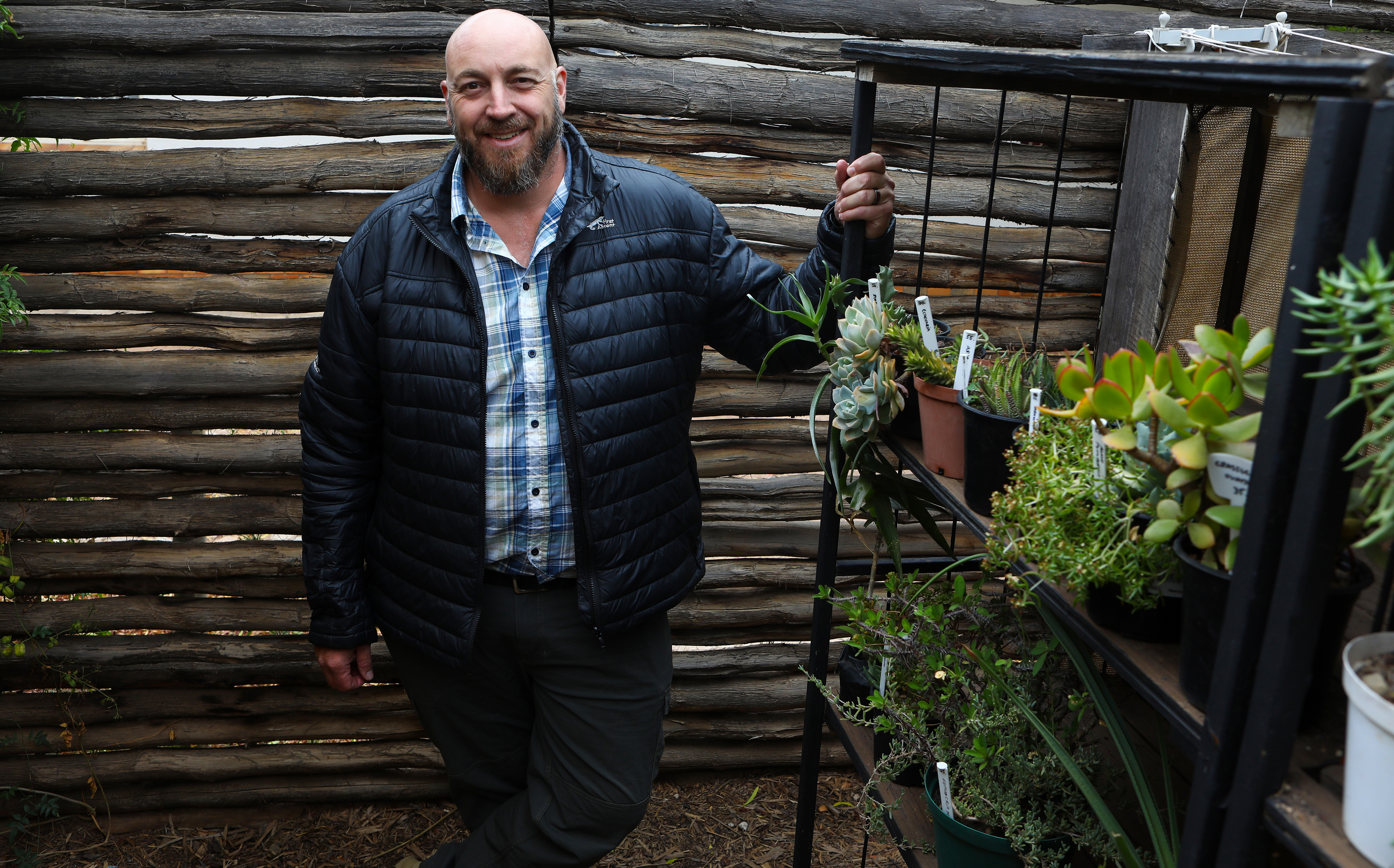
George Laubscher, the Ladismith respresentative at the Kannaland Residents and Ratepayers Association. (Photo: Shelley Christians)
As the municipality, they should have taken the lead to keep residents and businesses informed about updates, Laubscher said.
Mayor of Kannaland Jeffrey Donson, one of Ladismith’s two ward councillors, said that “never have people stood together like this before”. This included people storing meat with family members who had access to alternative energy sources as well as shops charging people’s phones for a small fee.
Donson – a controversial figure in the community and nationally after he was re-elected to office despite a 2004 conviction for raping a 15-year-old girl – spoke to Daily Maverick in his office. He said people couldn’t pay their debts. The Department of Social Development provided food hampers to people. “Everyone should have gotten hampers,” he said.

Kannaland mayor Jeffrey Donson speaks to Daily Maverick. (Photo: Shelley Christians)
According to Donson, generators provided by the Western Cape government “couldn’t keep the hall’s lights on” at the nearby Thusong Centre. The generators had been installed so residents could charge phones, laptops and other devices.
Government support
In response to queries, the Western Cape local government department said that through coordination efforts by the Western Cape Disaster Management Centre they had addressed communication challenges, a private service provider had placed a charging station in the Thusong Centre for residents’ use, diesel had been provided to old age homes through a private donor, while immediate relief to the area had arrived in the form of bottled water.
During his State of the Province Address on Monday, 19 February, Western Cape premier Alan Winde spoke about the disaster. “Citizens were at their most vulnerable and we stepped up, thank you.” The province had provided more than 5,000 food parcels to indigent households who lost perishable food.
“And even though the power is back on we will deliver a further 3,000 food parcels to learners from indigent households,” he added.
Daily Maverick asked Eskom what it was doing to prevent future disasters and such grid failures. Although the media desk confirmed receipt of our query, no response was forthcoming by the time of publication
Other power failures due to storm damage
This is not the first time in recent weeks that nature has caused havoc with Eskom electricity supply, particularly in the Western Cape.
In a statement, Eskom said last week that operators were progressing well with repairs to infrastructure that was severely damaged by a blaze that ravaged parts of the Overstrand municipality. According to Eskom, a fire that started on Monday 29 January spread rapidly due to strong coastal winds causing destruction to wildlife, residential structures and the Eskom network. Approximately 8km of Major Voltage(MV) line was burnt which caused a loss of electricity supply to customers in Pringle Bay, Sea Farms, Hangklip and surrounding areas.
Due to safety concerns, Eskom teams were only cleared by authorities for deployment to commence repairs on Saturday 3 February- the same day as the power outage in the Karoo. The estimated time for electricity restoration is 29 February.
Mainline repairs up to Sea Farms East nature reserve in Pringle Bay have been completed, with full completion of repairs estimated to conclude at the end of February. A portion of the mainline to Sea Farms hotel was livened up last week. DM
This is the second story in a series about Daily Maverick’s recent visit to Ladismith. Keep a lookout for more.

















 Become an Insider
Become an Insider
“Well, it takes government-supplied generators (lots of them), 5,000 food parcels and lots of patience for those who have not had their early-morning coffee.”
“The Department of Social Development provided food hampers to people.”
May you please be clear about “government” and “provincial government” and their departments. Your article suggests the National government sprang into action, when in fact it was the Western Cape Provincial Government. This type of intentional double entendre is an equivocation that DM journos are becoming distinctly prone to where it concerns the DA.
Totally, seems nobody has the balls to give the ANC the proper bashing that they deserve while at the same time lacking the integrity to give the DA the praise that it deserves.
Fact…..
Totally correct. Central government did diddly-squat.
It took the DA provincial government and the likes of Gift of The Givers to sort out the mess. Central government is responsible for the Eskom fiasco that includes the lack of maintenance on the transmission network.
And let’s not forget that this is an ANC run municipality. It was once again the DA provincial government that pulled the municipality’s proverbial chestnuts out of the fire. For the record, the chestnuts are just proverbial because they have all been stolen by the ANC.